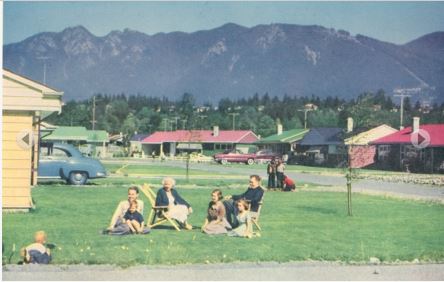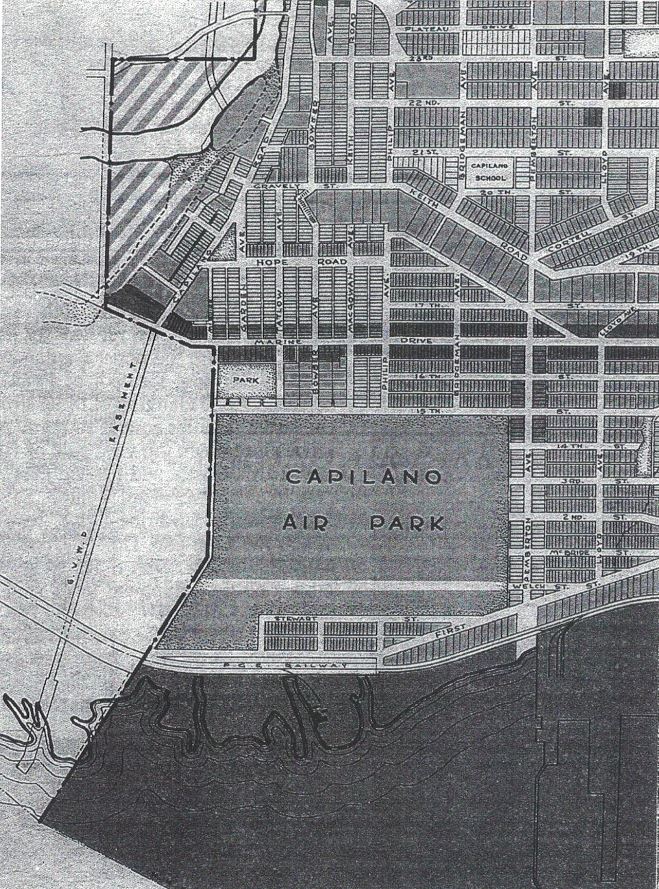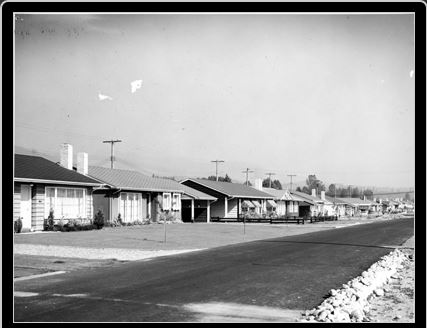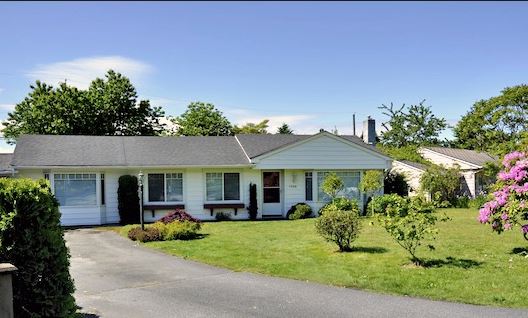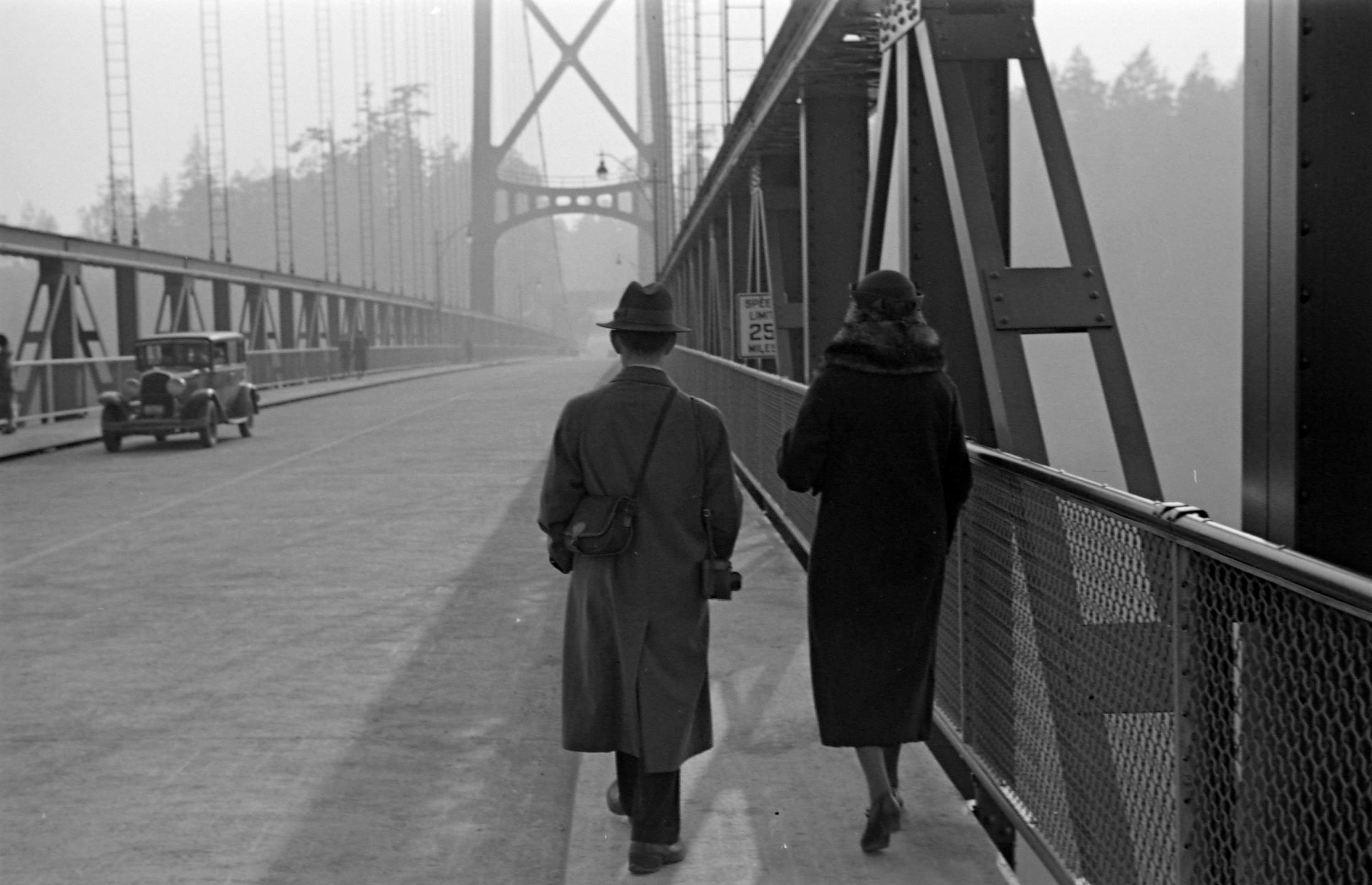
Last week we stopped our ride at Pemberton Avenue. Today we’re going to cross the border into West Vancouver.
The first part of the Spirit Trail winds through Norgate, a quiet neighbourhood filled with mid-century ranchers built during the post-war boom period. But did you know that the whole area was originally intended to be the Capilano Air Park?
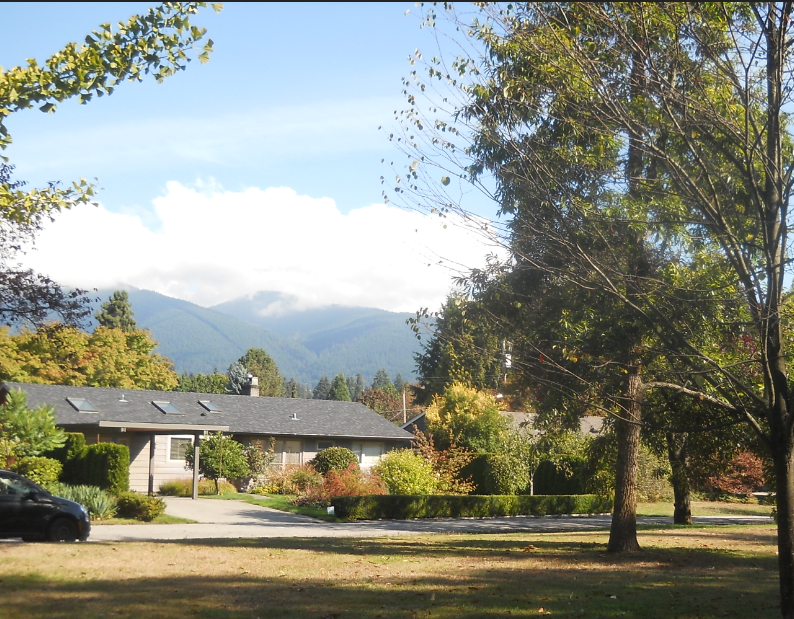
It was first proposed in 1945 and the idea was that it would cater to tourists flying their own planes from other parts of North America. There would be two runways and construction would start in 1947 and include luxury accommodation. In the end, we couldn’t afford it and the land was sold to Hullah Construction for a subdivision.
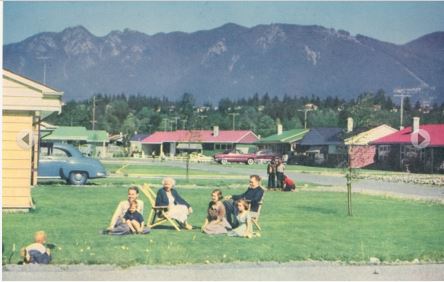
After we pass through Norgate, it’s a quick ride to the road that leads to the Lions Gate Bridge, built in 1939 by the Guinness brewing family. The provincial government later bought the bridge and the toll came off in 1963.
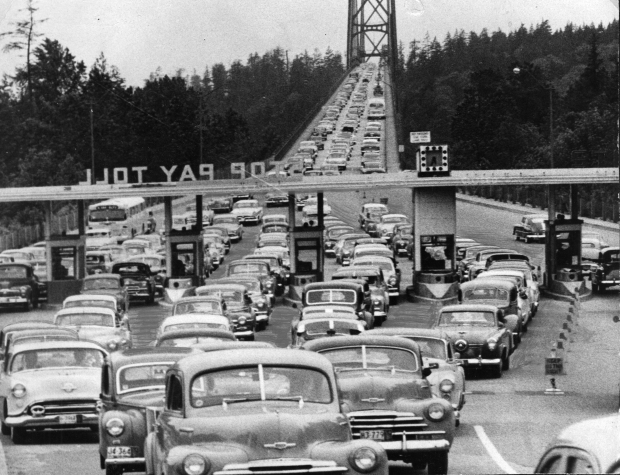
In 1982, a group of UBC engineering students suspended a Volkswagen Beetle from the bridge. On the first night, a group of students attached a cable under the bridge. On the second night, students drove a jeep towing the reinforced Beetle. The students detached the car, slipped a cable under its roof, attached the other end to the side of the bridge, and pushed the car over the railings.
As we approach the Capilano River and West Vancouver, it’s pretty clear that the district (named by Macleans Magazine as the richest postal code in Canada last year) is not spending its net worth on the Spirit Trail. In fact, it’s lack of enthusiasm is downright dangerous as you cross the bridge that takes you over to Ambleside.
But in 1913, it wasn’t cars that you had to worry about. The sand and gravel that washed down the Capilano River had built up on the north side of First Narrows to such an extent that ships were grounding, especially in bad weather. In July of that year, George Alfred Harris became the first lightkeeper at the newly constructed First Narrows Lighthouse.
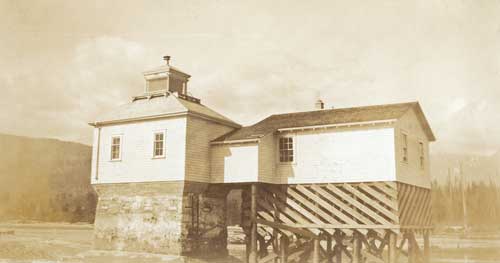
The lighthouse, and the keeper’s house sat on pilings at the mouth of the Capilano River, and except for very low tide, the Harris family was surrounded by water. The lighthouse operated until 1968.
Top photo: Walking over the Lions Gate Bridge in 1939. Courtesy CVA 260-995
© All rights reserved. Unless otherwise indicated, all blog content copyright Eve Lazarus.
Next time, we’ll be riding through Ambleside and along to Dundarave where the Spirit Trail ends for now.
If you’ve missed any of the rides, please see:
The North Shore’s Spirit Trail – Moodyville (part 1)



